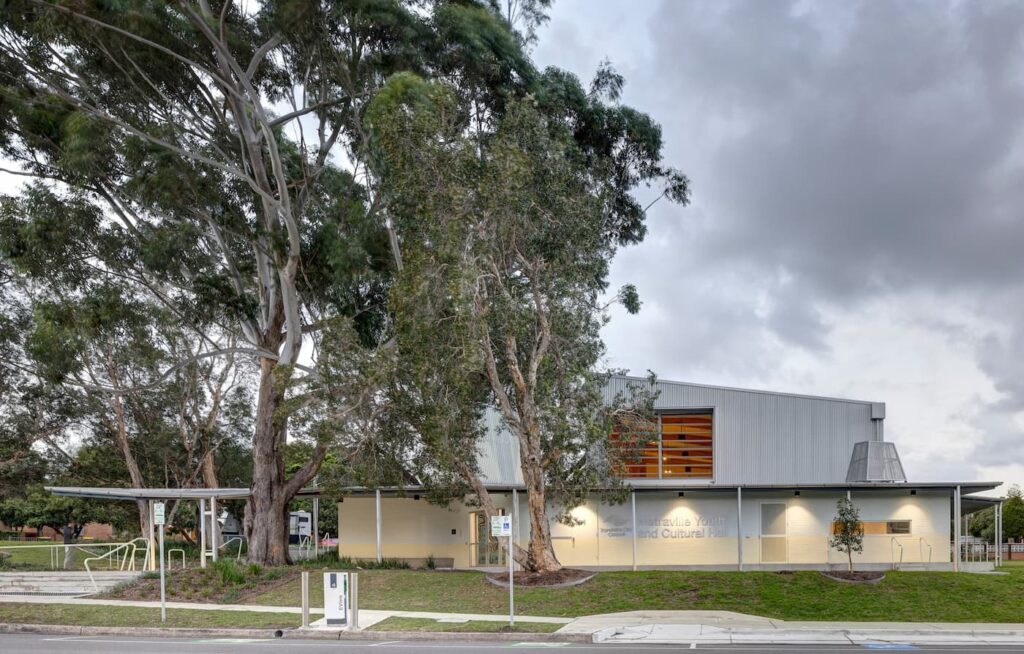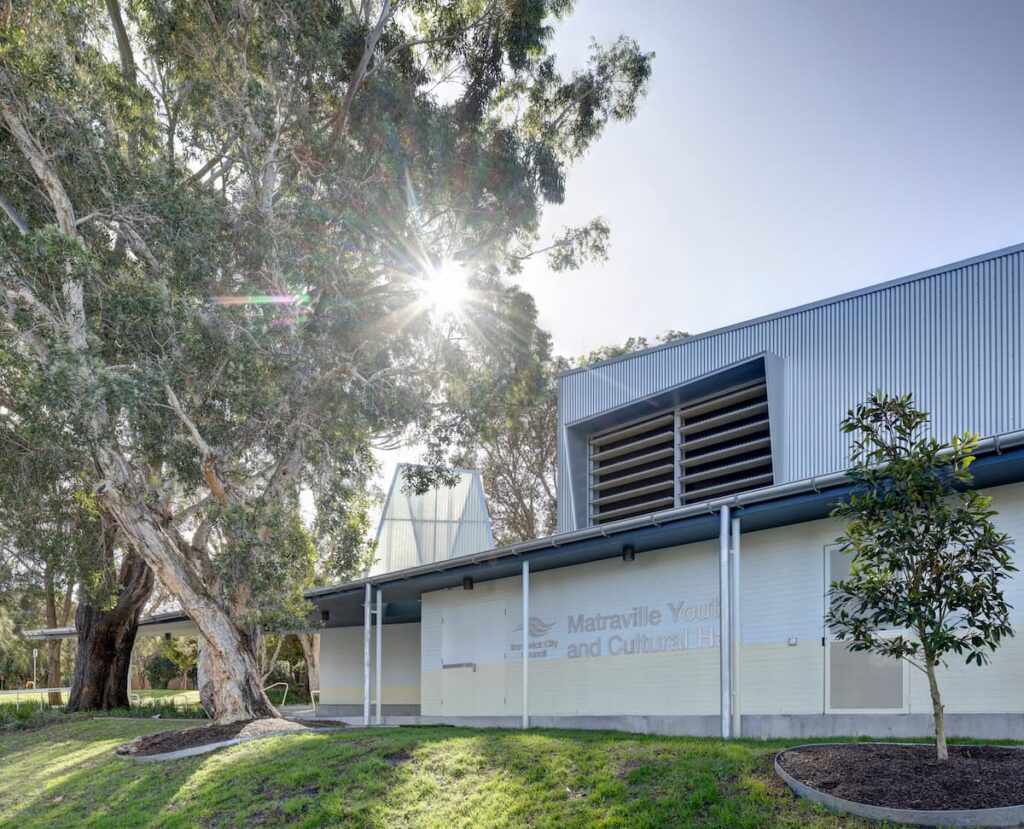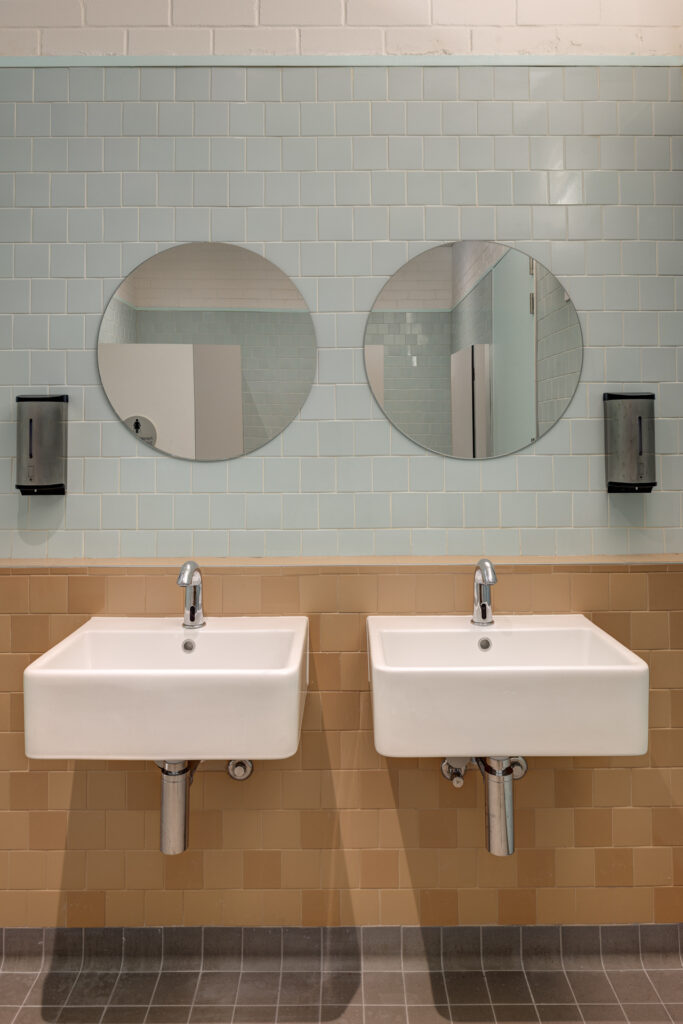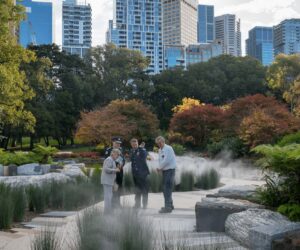Preserving a Grove of Mature Native Trees Inspired the Layout of Matraville Community Hall
A grove of mature native trees determined the plan of a new community hall for Randwick Council in Sydney’s eastern suburbs by Sam Crawford Architects. The inverted L-shaped layout allowed the trees to be retained and celebrated, with a much-loved blackbutt tree informing the geometry of the entry sequence.
“We really appreciated Randwick Council’s commitment to sustainability throughout the design and delivery of the new Matraville Youth and Community Hall,” said Sam Crawford, director of Sam Crawford Architects.
“The design process was both extremely challenging and very rewarding. The site contained 18 mature native trees – a mix of banksia, paperbark, blackbutt and casurina. Working with Council staff and our arborist, we managed to finesse the layout of the building to retain 16 of those beautiful trees.”
On the site of a former migrant hostel, the hall replaces a rundown 1950s steel-framed and clad structure, which had been used as a local meeting venue until the last few years.
Located on a corner site and adjoining a parcel of crown reserve, in a suburban area, the building knits the two sites together, creating a presence and drawing people in from different access points. Form and materiality are residential in scale, simple and sympathetic to the surrounding context.
SCA Project Architect Ben Chan added: “The building sits comfortably in the existing landscape, enveloped by the stunning trees, and a beacon at night when lit from within. The local community has embraced the new facilities (from 80th birthday parties to little kids’ soccer) and its new landscape (joggers and dog-walkers).”
Dance, yoga, exercise classes and indoor sports – the local community had expressed a strong interest in a venue for these activities. SCA designed a flexible space, which features a large hall available for hire, with a kitchen, accessible storage and toilets. A wide covered verandah overlooking the reserve offers additional gathering space for special events such as community and cultural celebrations.
The entry is signposted with a playful skylight shaft of fibreglass, a beacon that lights the space and emits a soft glow at night. A wide stair and accessible pathway with shaded veranda welcome visitors into a vestibule space which features a mural by Indigenous artists Re-right Collective and local school kids. This entry lobby and a toilet corridor airlock are separated from the main hall, whilst storage is accessed directly from the main space.
The expression of the building is one of a tough, yet playful exterior, with a warm and welcoming interior. Materials have been selected to be robust, tactile, and sustainable. The exterior is painted brick in colours expressive of the local coastal environment, with corrugated zincalume steel and polycarbonate. The main hall structure, as well as the floors, walls and ceilings are made from glue-laminated plantation hardwood timbers and the floor of Australian hardwood.
Window openings in the hall and amenities have been carefully curated to offer expansive views to the established trees and adjacent reserve.
In the hall a stack effect with a high opening to the north and lower opening to the south increases natural ventilation and lighting. Large operable wall panels allow summer breezes to naturally cool the building. The southern wall is made of a translucent polycarbonate insulated wall system that allows natural light and insulation. Ceiling fans provide cooling, and in winter recirculate warm air generated by a reticulated underfloor heating system. There are solar panels, heat pump, rainwater re-use, EV chargers with dedicated EV parking spaces.
“The use of sustainably sourced Australian timbers provides a warm and welcoming feel – something greatly appreciated by nearby residents,” added Crawford.
For more information, visit samcrawfordarchitects.com.au














